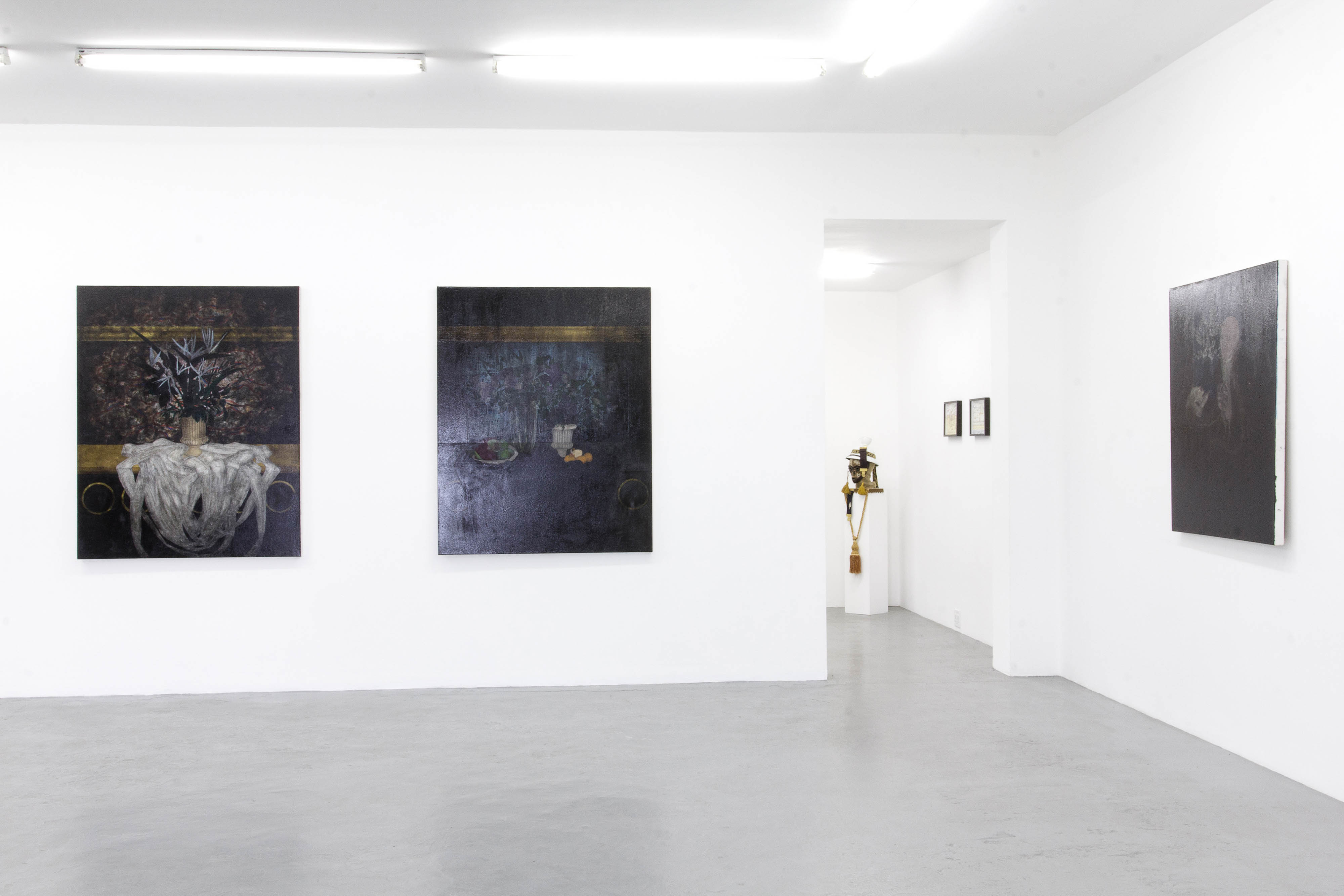








In Thirty Pieces of Silver, Cinga Samson presents new works that address themes of masculinity, spirituality and race against the backdrop of Post-colonialism. Painting personal visions together with imagery culled and pieced together from art history books, his style more reminiscent of formal traditions of European art than it is of contemporary (South African) painting. Moving between Vanitas-like still lives – bouquets of flowers, peeled fruit and animal skulls – and depictions of groups of conspiratorial white men dressed in Victorian costume, the paintings are anachronistic and surreal; like visions or dreams, figures and objects emerge, strangely illuminated, from cold and murky interiors. Explaining his iconography, Samson states:
“When I create an artwork, I want the results to feel secret, almost holy and distant. I always picture the audience of my work standing in front of it, looking what I have put in front of them, whether it’s the image of flowers or figures…, unclear as to what it’s all about and also having a sense that what’s in the images is something from a different world that they don’t belong to, maybe from another time or perhaps somewhere, where no one goes.
Being from a family of many male figures (having nine brothers) made it natural for me to use them as constant symbols in my work. The flowers are sensitive – almost contrary to man – and close to my heart, and I find them interesting as symbols and appealing in many different ways.”
Samson believes that, consciously or unconsciously, and without being directly political, his artworks engage with the frustrations of young black Africans and their sense of displacement within the nationalistic narrative of social cohesion. He is interested in their disillusionment with their institutions (religious, educational, etc) that appear to be maintaining the status quo by regulating and pacifying rather than furthering the radical development so longed for. Samson’s process includes gathering ideas from locals about their environment and their pervading sense of invasion from both ‘outsiders’ and visible remnants of the past. He is intrigued by the myths and conspiracy theories invented by the community to impose order on their world (this interest helps to fuel the sense of the fantastique in his art), paralleled by the basic human instincts that drive our existence, leading him to question whether we are above the natural laws of the animal kingdom that dictate the ‘survival of the fittest’, or if our social hierarchy is in fact governed by them to some degree.
“When I create an artwork, I want the results to feel secret, almost holy and distant. I always picture the audience of my work standing in front of it, looking what I have put in front of them, whether it’s the image of flowers or figures…, unclear as to what it’s all about and also having a sense that what’s in the images is something from a different world that they don’t belong to, maybe from another time or perhaps somewhere, where no one goes.
Being from a family of many male figures (having nine brothers) made it natural for me to use them as constant symbols in my work. The flowers are sensitive – almost contrary to man – and close to my heart, and I find them interesting as symbols and appealing in many different ways.”
Samson believes that, consciously or unconsciously, and without being directly political, his artworks engage with the frustrations of young black Africans and their sense of displacement within the nationalistic narrative of social cohesion. He is interested in their disillusionment with their institutions (religious, educational, etc) that appear to be maintaining the status quo by regulating and pacifying rather than furthering the radical development so longed for. Samson’s process includes gathering ideas from locals about their environment and their pervading sense of invasion from both ‘outsiders’ and visible remnants of the past. He is intrigued by the myths and conspiracy theories invented by the community to impose order on their world (this interest helps to fuel the sense of the fantastique in his art), paralleled by the basic human instincts that drive our existence, leading him to question whether we are above the natural laws of the animal kingdom that dictate the ‘survival of the fittest’, or if our social hierarchy is in fact governed by them to some degree.